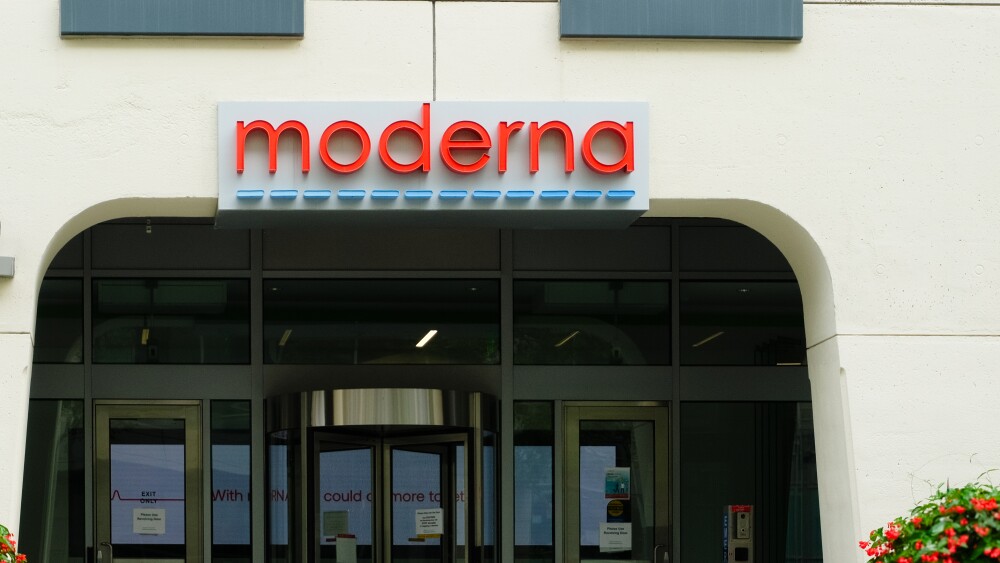The robust $77 million Series A was led by Octagon Capital and the leadership and research team behind the original Vedere Bio.
Vedere Bio president and CEO, Cyrus Mozayeni/Photo courtesy of Vedere Bio
Vedere Bio, a company developing next-generation ocular gene therapies, officially debuted this morning with the goal of restoring vision in multiple underserved forms of blindness.
Officially Vedere Bio II, the new company is the successor to the first Vedere Bio, which was acquired by Novartis in September 2020. Novartis made the move to expand its presence in ophthalmology and enhance its position as an AAV-based gene therapy leader.
The robust $77 million Series A was led by Octagon Capital and the leadership and research team behind the original Vedere Bio.
The new Vedere intends to not only slow down vision loss, as is the case with most current gene therapies, but also restore it at a higher quality with novel payloads delivered via proprietary adeno-associated virus (AAV) capsids.
Vedere’s optogenetics platform, based on technology created by scientific founders Drs. Ehud Isacoff and John G. Flannery at UC Berkeley, and enhanced ocular gene therapy delivery developed along with the School of Veterinary Medicine at the University of Pennsylvania is two-pronged.
A gene protein-coupled receptor is expressed in the retina, which then binds permanently to the second component, a synthetic molecule. That small molecule then responds to light, changes shape, and leads to signaling through the receptor that lets the brain know what the eye is seeing.
The normal human eye contains a photoreceptor that admits light and turns it into a neuroelectrical signal. In most forms of vision loss, this cell dies. Vedere’s approach targets downstream cells that, fortunately, do not suffer the same fate.
“The cells that are downstream from that defective photoreceptor can survive for many decades and be healthy and viable. They are just not getting any input. We use this approach to target those surviving cells that don’t normally respond to light, and we can convert them into a type of surrogate light-sensing cell, a surrogate photoreceptor,” said Cyrus Mozayeni, Vedere president and CEO. “Essentially, we’re bypassing the broken part of the circuit and installing this function where it normally wouldn’t be.”
In preclinical studies using an RD1 mouse, the gold standard for Retinitis Ppigmentosa (RP), Vedere has demonstrated the ability to restore vision-based behaviors.
“We have robust data sets across multiple behavioral models in these blind mice where we’ve demonstrated the ability to restore visual function, to the point where at least in the assays we’ve used to date, they’re not distinguishable from wildtype animals that have no defect,” Mozayeni said.
Mozayeni has high hopes for the translatability.
“Even though the exact architecture of the eye and the retina is different from animal to animal, the wiring and the fundamental cellular structures involved in vision are very similar from one mammal to another. So we think there is a tremendous amount of translatability of that animal model in terms of the likelihood of efficacy. The key is that because the structure is different, you need to have capsids that can actually deliver to the target cell of interest. So that’s a huge part of what we have,” he explained.
Mozayeni added that the kinetic capability of the therapies played a big role in attracting the excitement of founding investors like Atlas Venture, and new backers such as Samsara BioCapital and Casdin Capital.
“What we’ve seen is that we’re able to restore not only high acuity vision but high acuity vision in motion. That is an extremely important thing as we think about patient quality of life and independence. It’s one thing to restore vision in a slowly moving world or a static snapshot. That is already an amazing thing, but if it can do that and allow it to work in a world that’s moving rapidly, then hopefully a patient will be able to cross a busy street safely,” he said.
Vedere’s approach is also unique in that it can treat disease at a further state of progression.
“With the approach of gene replacement or gene correction that most others are doing, you’re just basically trying to change the shape of a decline curve. So you’re starting at reduced vision and you’re trying to preserve that reduced vision instead of seeing it get worse. With our approach, we’re actually adding new function back, so we’re rapidly adding a gain of function. What that means is that we can treat later in disease,” Mozayeni said.
While Vedere is beginning with RP, its mutation agnostic approach is relatable to a wide variety of inherited retinal diseases (IRDs) that stem from the death of the photoreceptor, as well as other non-inherited conditions.
A primary target is geographic atrophy, or advanced dry age-related macular degeneration (AMD), which according to Mozayeni, affects approximately 5 million people across the globe.






